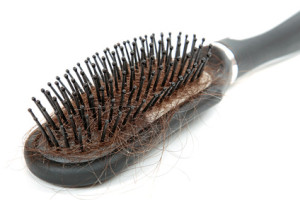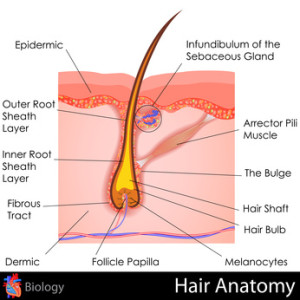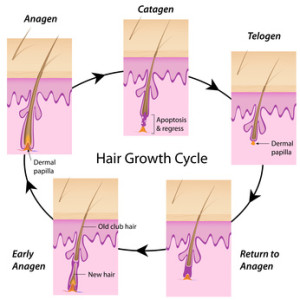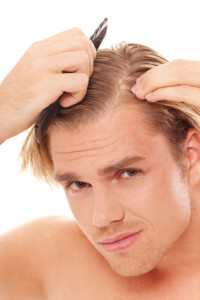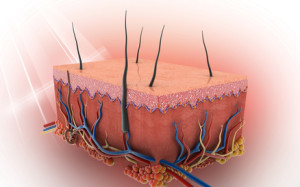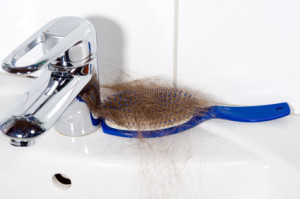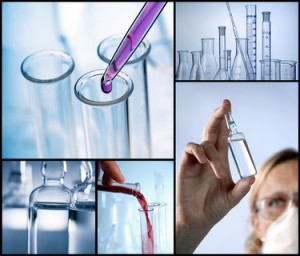[tube]V7V3SqJp00c[/tube]
We constantly experience hair loss, because we naturally shed around one hundred hairs every day.
This is normal and part of the natural renewal process. With around 100,000 active hair follicles, losing such a small number daily doesn’t present any visible changes in hair density or coverage. However, advanced hair thinning and hair loss affects millions of people throughout the Western world.
Although often associated with older men, hair loss and hair thinning can occur at any age and impact both men and women.
Contents
- 1 You will learn
- 2 Various Forms of Hair Loss & Triggers
- 3 Hair Loss Triggers
- 4
- 5 Basic Hair Anatomy
- 6 The Natural Hair Cycle
- 7 The Role of Amino Acids & Preventing Hair Loss
- 8 A Closer Look At These Key Amino Acids
- 9 Arginine
- 10 Cysteine
- 11 Methionine
- 12 Lysine
- 13 Glycine
- 14 Proline
- 15 Other Important Nutrients for Healthy Hair
- 16 Conclusion
You will learn
[success]
- About the different types of hair loss and their causes
- The basic anatomy of your hair and what happens when it grows
- How six amino acids can help reduce hair loss
- Which other nutrients are good for your hair
[/success]
Various Forms of Hair Loss & Triggers
As we age, our hair density naturally declines. However, there are also a wide range of factors that can trigger accelerated hair thinning.
Hereditary thinning or baldness (androgenic alopecia)
Approximately 95% of accelerated hair loss cases in both men and women are caused by androgenic alopecia. A genetic predisposition to hair loss can trigger a group of hormones called androgens. These cause hair follicles to shrink and thus unable to support hair growth.
The pattern of hair thinning often differs for men and women. Men typically develop bald patches around the forehead or on top of the scalp. Women find that their hair significantly thins across the top of the scalp. By the time men and women reach 50 years of age, 50 percent will have visible hair loss as a result of androgenic alopecia.
Other types of alopecia
Less common forms of alopecia include the autoimmune diseases cicatricial (scarring) alopecia and alopecia areata. Catricial alopecia occurs when the body’s immune system damages the hair follicles and leads to the formation of scar tissue.
This scar tissue forms over the hair follicles, preventing re-growth and resulting in patchy baldness. Alopecia areata impairs hair growth and causes the development of smooth, round bald patches on the scalp.
Both conditions may occur at any age and can affect otherwise healthy individuals.
Hair Loss Triggers
[sections] [section title=”Medical conditions“]
Sometimes hair loss and hair thinning is an indicator of an underlying health issue. Certain diseases, such as thyroid dysfunction and anaemia, can trigger hair loss. Even a short-term illness can result in hair thinning, such as a high fever, flu and untreated ringworm infections.
Significant hair thinning and patchiness can also occur as a result of an unusual impulsive disorder called trichotillomania. Patients with this medical condition are unable to stop pulling and twisting their hair.
Women are most susceptible to this disorder and it’s believed to affect around four percent of the population1.
[/section] [section title=”Hormonal changes“]
Following childbirth and during menopause, it’s not unusual for women to experience excessive hair loss. Fluctuations in hormones will trigger hair thinning. In most cases this is temporary. However, after 40 years of age it isn’t unusual for women to have lower hair density compared with when they were younger.
[/section][section title=”Stress“]
Physical and emotional stress can trigger hair loss. Following surgical procedures it’s not unusual to experience hair loss as the body responds to the shock. The loss of a loved one, financial strain, relationship breakdowns and other stressful situations can also cause excessive hair thinning.
Similar to hormonal changes, stress related hair loss is often temporary.
[/section][section title=”Medication“]
There are a wide range of medications that can cause hair thinning. These include birth control pills, anabolic steroids, blood thinners and excessive concentration of vitamin A. Hair loss can also be a side effect of various prescribed drugs used to treat depression, blood pressure, heart problems, cancer and arthritis.
[/section][section title=”Other hair loss triggers“]
Poor nutrition and unhealthy lifestyle choice can contribute to hair loss. Also, certain hairstyles, frequent heat treatments, colour applications and other hair maintenance practices can result in damage to the hair shaft and root.
[/section][/sections]
Basic Hair Anatomy
Preventative treatments for hair loss are based on our understanding of hair anatomy and how to stimulate new hair growth.
Hair is characterised by a root embedding into the epidermis and the shaft extending from the root.
A follicle surrounds the root and this is intercepted by nerve fibres and capillaries that provide nourishment. The hair shaft develops as new cells form around the follicle, push up and die.
There are three distinctive layers within a hair shaft; these are the medulla, cortex and cuticle. The innermost layer is medulla and its purpose is not well understood.
The middle layer is the cortex and this controls the strength and thickness of the hair. The outer layer is the transparent cuticle, designed to protect the other layers of the hair shaft.
Structural proteins called keratin makeup the bulk of the hair shaft. This is the same protein that’s present in our skin and nails. It’s fibrous and aligns parallel to form sheet that are held together by hydrogen.
Also present in hair is another structural protein called collagen which is important for hair health, strength and growth.
The Natural Hair Cycle
The growth cycle of hair goes through three different phases. Anagen is the first phase and this is the most active, lasting from between two and six years.
Catagen is the second phase and this is when hair is turned in keratin. Telogen is the final stage of the cycle. This is when the hair sheds and the anagen phase recommences. When the follicles fail to re-enter the anagen phase, hair loss occurs. This leaves the follicles inactive and over time this leads to thinning and noticeable hair loss.
The Role of Amino Acids & Preventing Hair Loss
Clearly healthy hair requires plenty of keratin, and to a lesser extent, collagen. For the body to produce these structural proteins it must have sufficient access to certain amino acids.
There are four key amino acids necessary to produce keratin: cysteine, lysine, arginine and methionine. Collagen production relies on access to the amino acids lysine, methionine, glycine and proline.
Of these amino acids, methionine and lysine are classed as essential, meaning that they must be sourced from our diet. The other important amino acids for healthy hair growth can be synthesised by the body, although they may be in low concentrations if nutrition is poor.
Through boosting the availability of key amino acids involved in the production of keratin and collagen, it’s possible to combat hair loss and stimulate new hair growth.
A Closer Look At These Key Amino Acids
Arginine
In addition to helping to produce keratin, Arginine is a very important amino acid. Amongst several critical health benefits, it enhanced immune function helping to minimize disease-related hair loss. Research has also shown that this amino acid can help to shield the hair from the damaging effects of hair colouring and bleaching2.
Arginine is also essential for the production of nitric oxide (NO).It is vital for improving blood circulation and nutrient supply to the hair follicles. This facilitates healthy hair growth.
Although not an essential amino acid, there are times when arginine becomes conditionally essential. When the body is stressed, such as recovering from an illness or it is exposed to insufficient nutrition, the demands for arginine increase and the body can’t produce enough.
Elevating arginine concentrations through diet can help to treat hair loss. This applies especially if it’s a symptom of an underlying health issue.
Good food sources for arginine include dairy, fish, beef, poultry, oatmeal, sesame seeds, chick peas, soybeans, granola, pumpkin seeds, sunflower seeds and nuts.
Cysteine
Approximately a quarter of keratin is made from this Cysteine.
Several studies have confirmed that cysteine supplementation can reduce the symptoms of androgenic alopecia3.
This is also a vital amino acid in the production of the powerful antioxidant glutathione.
Thus, cysteine indirectly assists with the protection of hair follicles from oxidative stress.
Similar to arginine, the body manufactures its own cysteine.
However, including cysteine rich foods in your diet will ensure that there’s no deficiency in this important amino acid.
Ideal food sources include poultry, pork, dairy, legumes, broccoli and whole grains.
Methionine
The second major component of keratin is methionine. This amino acid is also vital for the synthesis of the precursor to collagen called procollagen.
As antioxidant, methionine also helps to protect the hair follicles from oxidative stress. Research has shown that low concentrations of methionine cause a decline in hair health and growth diminishes4.
Other studies suggest that this amino acid could also have an important role in slowing the greying of hair, as well as hair thinning5.
Since the body is unable to produce this essential amino acid, you must include food rich in methionine in your diet.
Good food choices for methionine include fish, eggs, seeds, leafy greens, broccoli, zucchini, squash and nuts.
Lysine
This essential amino acid helps to stimulate collagen and is important for repairing damaged hair. Hair follicles also require Lysine to properly function. Research has shown that hair loss can be reduced with lysine supplementation6
Ideal food sources for lysine include fish (especially salmon, sardines and cod), dairy products, poultry, red meat, pork, legumes, nuts, spirulina and pulses.
Glycine
One of the smallest and commonest amino acids, glycine is very important for the digestive and central nervous systems.
Importantly, it also helps to produce collagen.
The body can manufacture this amino acid itself. It can also be sourced from protein-rich foods such as fish, meat, dairy, soybeans, spinach, cabbage, beans, kale, banana and kiwi fruit.
Proline
This non-essential amino acid helps to produce collagen and cartilage, as well as maintaining muscle tissues.The best food sources for proline include meat, dairy, eggs, asparagus, avocado, beans, broccoli, spinach, legume and soy beans.
Other Important Nutrients for Healthy Hair
In addition to the amino acids mentioned, there are also a range of vitamins, minerals, trace elements and other natural compounds that are important for preventing hair loss.
Vitamins E, B5, B6, B12 and folic acid are needed to support healthy hair follicles by promoting good blood circulation and the delivery of vital nourishment.
Vitamin A is necessary to support the production of sebum, the oily substance that lubricates the hair follicles.
Vitamin C is essential for collagen synthesis and maintaining strong hair. Iron, silica and zinc are also required for hair growth and protection.
Essential fatty acids are important for many aspects of our health, including safeguarding against hair loss. They help to increase hair follicle nutrient absorption, enhance immune function and reduce oxidative stress.
Omega-3 fatty acids are important for cell growth and blood circulation, supporting healthy hair follicles. Insufficient fatty acids can result in dry and brittle hair, dandruff and other skin aliments of the scalp.
Studies have confirmed that deficiencies in essential fatty acids lead to hair loss7.
Here is a useful test, which compares 13 leading combination hair growth supplements. These supplements conveniently combine many key hair growth micro-nutrients in one product.
Conclusion
Oxidative stress is also problematic, causing cellular damage that can trigger hair loss. Hormone fluctuations can increase androgens, further contributing to hair loss.
Despite these factors and other common hair loss triggers, there are steps we can take to slow down the process and retain good hair coverage.
Elevating the concentration of important amino acids, vitamins, minerals, trace elements and other compounds that are necessary to support hair growth, maintenance and protection will help to minimize hair loss. Diets rich methionine, cysteine and arginine can minimize oxidative stress, help to balance hormones, and slow the aging process.
The most efficient and cost-effective way to provide the body with the right mix micro-nutrients for hair growth is to consume a high-quality food supplement, which you will take in addition to your normal diet.
Here is a useful test, which compares 13 leading hair growth supplements.
Remember that these food supplements will not only promote healthy hair. They will also support your overall health and well-being.
Related Studies:
- “http://www.ncbi.nlm.nih.gov/pubmedhealth/PMH0002485” ↩
- “http://www.ncbi.nlm.nih.gov/pubmed/15645092” ↩
- “http://onlinelibrary.wiley.com/doi/10.1111/j.1610-0379.2011.07802.x/full” ↩
- “http://jcs.biologists.org/content/119/3/391.short” ↩
- “http://www.ncbi.nlm.nih.gov/pmc/articles/PMC2929555/” ↩
- “http://www.ncbi.nlm.nih.gov/pubmed/18498491” ↩
- “http://www.ncbi.nlm.nih.gov/pubmed/20823774” ↩

